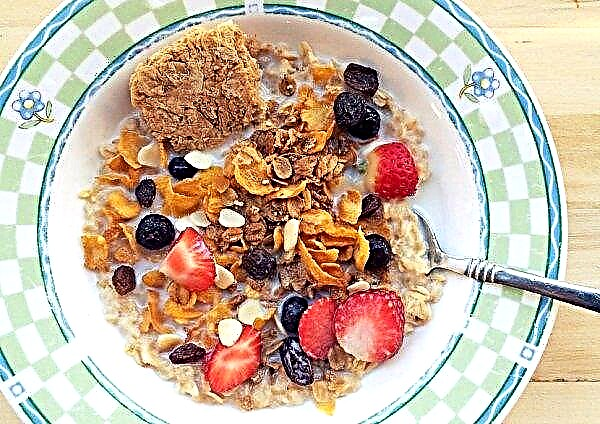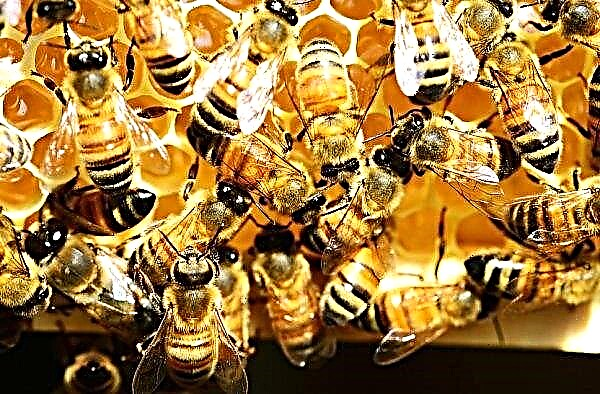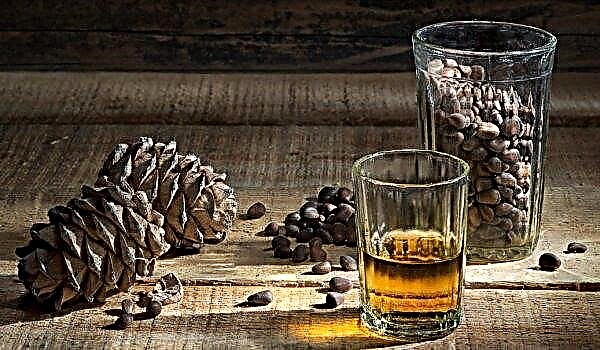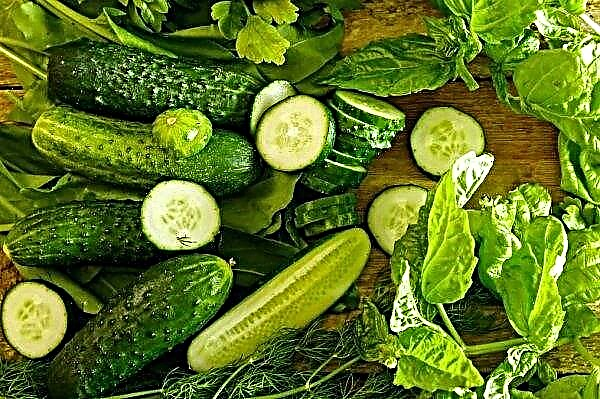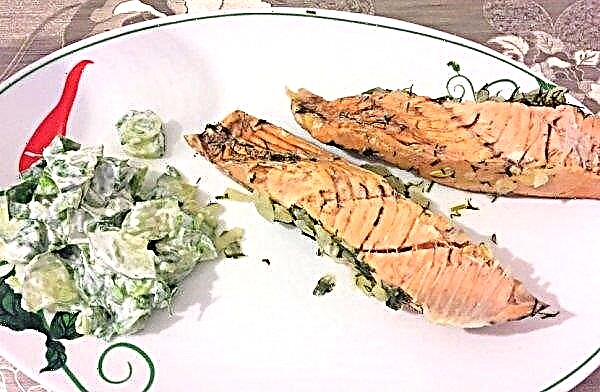Red beans are a valuable source of protein. Like any other product, this culture has its positive and negative sides. The beneficial properties, possible dangers and areas of use of red beans will be discussed below.
Red Bean Composition
The most valuable elements that are rich in culture are easily digestible proteins (B vitamins), which are equivalent in nutritional value to meat.
In addition to protein, the product includes the following vitamins and minerals:
- vitamin C;
- phosphorus;
- potassium;
- zinc;
- magnesium;
- sodium;
- cobalt;
- selenium;
- aluminum;
- calcium;
- lysine;
- tryptophan;
- histidine;
- iron.

Calorie content and nutritional value
100 g of raw beans contain 333 cal, which accounts for:
- 0.2 g of saturated fat;
- 0.6 g polyunsaturated fat;
- 0.1 g monounsaturated fat;
- 12 mg of sodium;
- 61.3 g of complex carbohydrates;
- 15.2 g of fiber;
- 2.1 g simple carbohydrates;
- 22.6 g of protein.
The benefits and harms of plants
The beneficial properties of the product will be noticeable when it is regularly eaten without exceeding the daily norm of 100 g. Red beans are extremely useful for diabetes. Its unique composition allows you to restore blood glucose levels. The high protein content allows you to make the product a complete substitute for meat in vegetarian diets, which exclude a large amount of food necessary for the normal development and functioning of the human body.
- Due to its rich composition, the product has the following healing effects on the body:
- provides the removal of toxins;
- promotes tissue repair at the cellular level;
- increases the efficiency of the immune system;
- accelerates fluid withdrawal;
- improves the performance of the endocrine system.
- Other cons:
- the crude product contains a toxic compound - glycoside, which breaks down during heat treatment;
- fiber contained in beans is difficult to digest, therefore it can harm the children's body or people with intestinal dysfunction;
- legumes cause excessive gas formation. This feature determines the content of oligosaccharides, which are not destroyed during cooking. To eliminate this side effect from the use of beans, the products must be soaked in water before heat treatment for at least 2 hours.
The benefits and harms of the fruits of this plant are determined by age characteristics, as well as the state of human health and gender.
For men
Regular use of beans helps men lower their blood cholesterol levels. In addition, products significantly increase potency. With physical and mental stress, due to fiber and vitamin complex, the electrolyte balance is perfectly restored. Calcium and magnesium help restore the structure of bone and cartilage, which helps to reduce the risk of osteochondrosis. The norm of consumption for a man weighing 70 kg is 150-200 g. In a week, dishes with legumes can be consumed 2-4 times.
Important! In order for the beans to soften faster and the poisonous compounds to decay, soak the product in boiling water before cooking. Be sure to mix the beans every 15 minutes, otherwise they will stick together.
For women
With regular use of beans, the female body is saturated with essential amino acids, which helps to restore a stable hormonal background. Antioxidants not only help improve the state of the immune system, but also slow down the aging of the skin, give it elasticity. The daily consumption rate for a woman is 100 g. You can consume no more than 300 g of products per week.
For children
It is better for children to introduce legumes from 3 years, as the product is difficult to digest. In childhood, there is an accelerated development of all organs, which takes a lot of strength and energy, negatively affecting the general state of immunity. B vitamins are involved in the construction of nerve and immune cells. Beans are especially useful during school hours, when the load on the brain increases. The norms of consumption of beans for children from 3 years old - 300 g per week.
How different is a canned product from fresh beans?
By caloric content, canned products are not very different from boiled products and are 115 calories for beans, filled with tomato sauce and 105 - with their own juice. The only difference is in taste features: canned products are more tender and crumbly.
Did you know? There are bean varieties that, after cooking, smell like mushrooms — Hell Rem and Akito.
Can I eat red beans?
The norms of consumption of the fruits of this culture directly depend on the state of human health and goals. In some cases, legumes are contraindicated.
During pregnancy
In pregnancy, legumes are an indispensable source of amino acids, and especially folic acid, which reduces the risk of developing pathologies in the fetus. Fiber helps digestion and detoxifies. With regular use of beans in normalized doses, a decrease in swelling is observed.
But the product is contraindicated if a pregnant woman has disorders in the digestive tract, accompanied by:
- increased or decreased acidity;
- constipation
- flatulence.
When breastfeeding
With breastfeeding, the product is contraindicated, since even with appropriate treatment it can lead to gas formation in the baby’s intestines. In addition, it is worth considering the fact that the digestive tract of a child up to 3 months is not yet fully formed. Legumes can be added to your diet no earlier than the child turns 9 months old.
Losing weight
Culture is an indispensable product for weight loss. It contributes to the production of cholecystokinin - a hormone that helps accelerate metabolic processes and remove cholesterol from the body. The long process of fiber digestion helps to get rid of hunger for a long time and increase energy reserves. An indispensable product in diets that involve a significant reduction in sugar. Helps restore blood sugar balance and eliminate discomfort in the form of dizziness, irritability when refusing sweets.
In addition, in combination with regular sports, legumes contribute to the rapid build-up of muscle mass. The consumption rate is 100 g per day. Daily it can be consumed with diets in which meat products are excluded; in other cases, the fruits are used as a substitute for garnish or in soups 3 times a week.
Red bean in folk medicine
In the recipes of ancient folk medicine, red beans and decoctions of the peel are used for:
- increase potency;
- removing the dead fetus from the uterine cavity;
- stopping postpartum hemorrhage;
- treatment of lung diseases;
- increased secretion of gastric secretion;
- treatment of urinary tract diseases.

Application in cosmetology
Due to its rich composition, beans have found application not only in cooking and medicine, but also in cosmetology. A popular face mask based on boiled beans - restores skin elasticity, eliminates acne, helps restore the upper layer of the dermis. As an exfoliating agent against acne and acne, bean flour is used in combination with honey.
Contraindications and possible harm
The use of the fruits of this culture is contraindicated in the following cases:
- gastritis;
- pyelonephritis;
- cholecystitis;
- pancreatitis
- gout;
- colitis;
- children under 3 years old;
- lactation period.
Important! To reduce the side effect of flatulence when using legumes, add a little soda (5 g per 100 g of beans) during the cooking process.
Red bean is a valuable product that can become a full substitute for meat. The regular normal use of dishes with this product helps to cleanse the body and increase its resistance to viruses and bacteria.

